Hack:
Designed for Growth and Engagement: Fixing the Invisible Stranglehold on Business Success
Organizations can be wildly successful, while at the same time creating an environment where their employees are ecstatic to go to work, every day, for generations to come. It means embracing our humanity, building on strengths, getting everyone involved, and growing organizations by growing their people.
Man versus Machine. Old habits are hard to break. Many of the mindsets of the early years of mass production still linger in today’s standard operating procedures, putting an invisible stranglehold on business success despite the readily available science supporting the type of behavior that drives human performance higher.
Examples of common business practices that ignore our humanity and embody the old machine mindset include: The Human Spec Sheet (aka Job Descriptions providing the subliminal message to stay busy rather than get important things done). Annual Recalibration (aka Annual Performance Reviews too little too late), Upgrades and Maintenance (aka Training delivered in a massive brain dump and deemed completed at the end of the event regardless of individual mastery), Decommission & Dismantle (aka Massive Layoffs = Corporate Lobotomy). Details here.
Lack of Trust. Company's don't trust their employees. Employees don’t trust their employers. Customers don’t trust companies. Relationships abound with a win/lose “every man for himself” mindset. It’s created a downward spiral. Up to about the 1950’s S&P 500 Companies had an average lifespan of about 75 years. Today it’s down to 15 years and dropping. Too many of today's businesses are built like a house of cards. We aren’t prepared for the rate of change that will occur in the 21st Century.
Evolve or Die. Successful companies of tomorrow will break free from traditional business practices and embrace the power of the unlimited human potential by recognizing that businesses are delicate eco systems that must be nurtured to flourish, that our world is completely networked so there is no place to hide bad behavior, and we can accomplish more than anyone has ever dreamed possible by working together with a mindset of abundance (win/win/win).
Start Where We Are. Starting over isn’t an option, we have to start where we are to optimize our existing businesses using a comprehensive yet flexible framework that provides tailor made results in the shortest timeframe. It’s possible when fueled by the only renewable resource within mankind, the human spirit. In my mind, it starts with Trust and flows something like this:

Using my limited graphic design capabilities, the concepts dancing around in my head came out looking like this:

This image is flat while the concepts are multi-dimensional, so I’ll provide additional graphics and descriptions throughout my explanation for more clarity.
Developmental Phases:
The way that people work together in organizations has at least two dimensions and there are different levels in each dimension. Every organization goes through these levels, which I’ll call developmental phases:
1. Natural Groups in Organizations – Team Effectiveness
2. Organizational Maturity Levels – Team Capabilities
Natural Groups in Organizations (Team Effectiveness)
I found Tribal Leadership: Leveraging Natural Groups to Build a Thriving Organization by Dave Logan, John Kin, and & Halee Fischer-Wright both enlightening and depressing (see Dave Logan’s Tribal Leadership TED Talk for a quick overview). The book made me realize that at the very best, the organizations that I had worked for and with over the last 30+ years had only been a Level 3 with a couple of Level 4 people in them, which leaves so much room for improvement.
My interpretation of the 5 Tribal Stages looks like this:
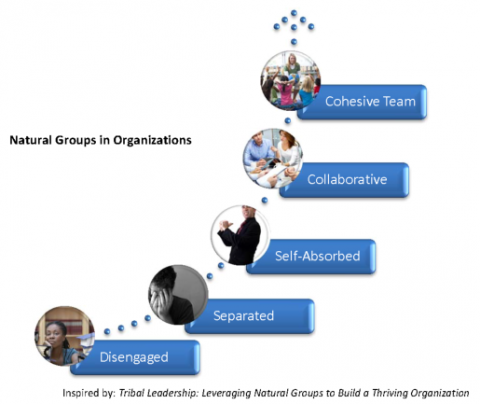
Level 1 – Disengaged – typically bitter employees with low productivity that spread their poor attitude like a virus. Sometimes they are actively disengaged people who spend their days sabotaging the efforts of others, sometimes for their own gain or in retribution for an actual or perceived injustice.
Level 2 – Separated – people low in self-confidence and struggling to survive. To help them evolve rather than devolve we need to show them that what they do matters, shine a light on their strengths and how they can improve over time.
Level 3 – Self-Absorbed – includes most professionals like attorneys, doctors, engineers, architects, accountants, and the like. Many businesses fall into this category. To help them evolve it’s important to help them recognize the limits of a single individual compared to the level of accomplishment that can be achieved by the organization as a whole through collaboration.
Level 4 – Collaborative – includes organizations that routinely collaborate with one another without limitation. They easily form cross functional teams to address issues that arise. They are focused on being the highest performing organization in their field.
Level 5 – Cohesive Teams – includes the highest performing teams in organizations that have evolved beyond being industry leaders and simultaneously work towards making the world a better place in their own way. They no longer spend time and energy thinking about the competition; instead they are driven to some other higher purpose…
Three additional points from the book that I’ve drawn from include:
Giving Each Other a Hand-up!

1. Tribal members support one another by giving each other a “hand-up” without waiting for a designated “leader” to “take care” of each member of the group. Additionally, each person has to start where they are and move through each remaining stage. There is no skipping ahead, the human condition prevents it. And just as easily as a person evolves, they can also devolve as a result of life’s circumstances. This is a never ending process.
Triads Have Built-in Strength!

2. Forming Triads is essential to the tribal growth process. When just two people (dyads) are involved, it’s easy for one person to dominate and the other to be submissive. When the inevitable conflict arises, the relationship can be easily damaged or terminated. Having the third person adds balance and stability to the group. Anytime conflict arises, the third person serves as the adhesive that keeps everyone focused on the objective and facilitates the repair of the relationship.
Group Limits
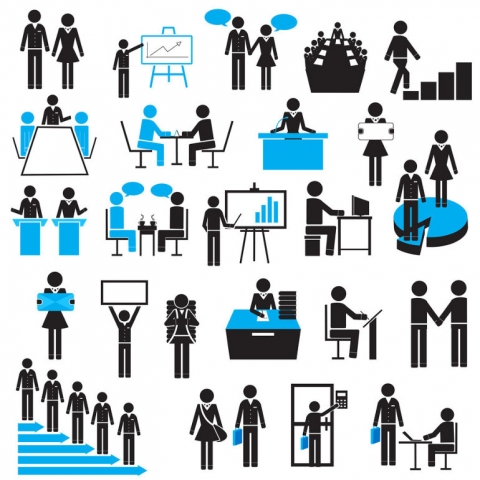
3. Groups of people are generally effective up to about 150 participants. The group level is determined by the individual stage of the majority of its participants. Even though the stage of individual leaders and managers does influence the group (both positively and negatively), their influence dissipates the farther the rest of the team is from their influence on a routine basis. It’s important to recognize what level each person is at, so that a progression plan can be developed to bring them up through their remaining levels, ideally to get everyone to level 5.
Organizational Maturity Levels (Team Capabilities)
Generally speaking organizations fall into one of four maturity/capability levels, according to Profiles in Performance: Business Intelligence Journeys and the Roadmap for Change. The following is my interpretation of those four levels plus an aspirational level 5:
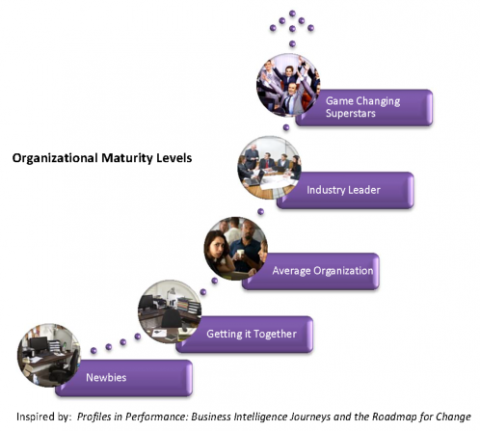
Level 1 - Newbies - This is where chaos reigns. The founders have an idea that they are trying to make commercially viable. Everything is an experiment. Change is constant. Risk of failure is around every corner.
Level 2 - Getting it Together – The team is still small but growing and has identified what is believed to be a viable path forward. Consistent processes are in the early stages of development but not yet stabilized or error free. Days are filled with crises management. The culture of the core team is being diluted and not everyone has a clear sense of the founder’s purpose and vision.
Level 3 - Average Organization – This is where parts of the organization have evolved processes and have stabilized their day-to-day operations with limited interaction or support of or from other areas of the organization. A type of status quo has been reached, with just enough stability for fairly routine daily operations.
Level 4 - Industry Leader – At this level collaboration and cooperation between the parts of the organization are common. Performance levels trend up through the use of industry best practices. Often the greatest danger is a natural tendency to become complacent, that’s why they say getting to the top is only half the battle.
Level 5 - Game Changing Superstars – These organizations excel at doing two things simultaneously. They take not only their organization but their entire industry to a higher level not seen before, serving as a role model for others to follow. As a result of their organizational purpose, they are at the center of a network of stakeholders whose efforts have been combined to add value to their customers in ways never previously imagined while using systems and processes that contribute to making the world a better place.
In my mind there is a direct correlation in the level of the people in the organization and the capabilities of the organization as a whole. The two groups of descriptions are intentionally similar but separate and distinct. A key to Level 5 maturity in organizations is their use of dynamic capabilities.
Dynamic Capabilities
The skills and abilities of organizations to not only survive but thrive in our highly competitive global economy is under fire. What worked throughout the industrial age is not sufficient for success in the 21st Century. New and more evolved skills are needed by employees and organizations as a whole. Organizations need to embed dynamic capabilities into their operating framework.
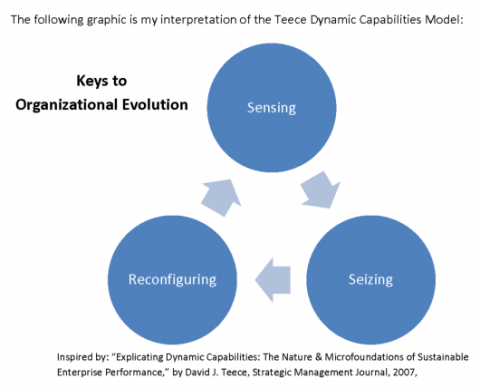
According to Professor David J. Teece at the Institute of Management, Innovation and Organization, Haas School of Business, University of California, Berkeley, CA, “Dynamic capabilities enable business enterprises to create, deploy, and protect the intangible assets that support superior long-run business performance. The microfoundations of dynamic capabilities – the distinct skills, processes, procedures, organization structures, decision rules, and disciplines – which undergird enterprise-level sensing, seizing, and reconfiguring capacities are difficult to develop and deploy. Enterprises with strong dynamic capabilities are intensely entrepreneurial. They not only adapt to business ecosystems, but also shape them through innovation and through collaboration with other enterprises, entities, and institutions.” He goes on to define the enterprise-level capacities as follows:
· Sensing refers to the capacity to sense and shape opportunities and threats to the organization.
· Seizing simply means the capacity to seize the desired opportunities when they arise.
· Reconfiguring refers to the capacity to maintain competitiveness through enhancing, combining, protecting, and, when necessary, reconfiguring its tangible and intangible assets, including difficult-to-replicate capabilities required to adapt to changing customer and technological opportunities.
The following are additional insights from Professor Teece’s article that support the concepts in the Business Design 2.0 framework.
Time to Up-skill

Organizations must “step-up” their game because following best practices, controlling costs, and incremental innovation might be enough to “stay in the game” in the short-term but it’s woefully inadequate for the long haul. We need to improve our analytical skills, our decision making skills, and maintain an entrepreneurial mindset regardless of the size of our organizations. Decentralized organizations with greater local autonomy are better positioned to address shifting market conditions.

The future mandates combining complementary innovations (internal and external to the organization) to create comprehensive customer solutions through collaboration with customers, suppliers, and complementary service providers (which is just one of many reasons to develop relationship capital with all the organization’s stakeholders).
Creatively designed business models are just as important as the technologies employed. Successful commercialization of any product or service is tied to key business model components. It’s not enough to innovate new products or services, the business model used to deploy them plays an essential role in the long-term success achieved.

Decision errors are high and are often tied to cognitive bias, delusions, deception, and hubris, which can be especially dangerous in our fast-paced world where recovery opportunities are limited. Due to the failure of many businesses to address these issues, a competitive advantage can be gained by organizations that adopt techniques to overcome these types of errors. (Like learning to give and receive feedback and have a culture that welcomes open and honest communication.)

Having an agile organizational structure is also essential. The ability to recombine organizational assets in conjunction with environmental change is necessary to maintain evolutionary fitness. The organization should embrace an agile mindset to minimize resistance to inevitable (and sometimes very fast) change. There can be no sacred cows. Every asset and every person must be willing to support redeployment for the long-term viability of the organization.
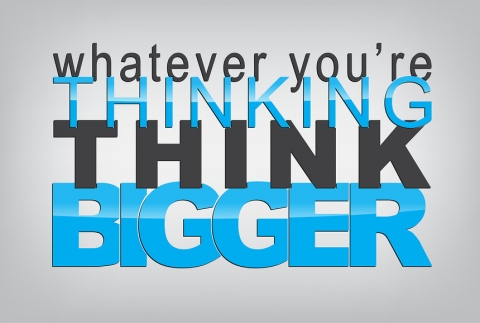
An entrepreneurial mindset to identify opportunities and redeploy the organization’s resources and relationships to not only be at the forefront of innovation but to shape its direction are essential skills needed for the coming years. Equally important is to break away from historical norms and stay ahead by developing knowledge assets, and creating new value-enhancing asset combinations, in a way that can’t be easily imitated.
Core Competencies
After much study and decades on the front lines of businesses, I identified what I considered to be the 3 root causes of corporate business failure (businesses not legally tied to the life of the owner), which includes:

1. Human Dimension:
a. Individual – every person is important, no exceptions.
b. How we treat and communicate with each other – how effectively we work together.
c. Cognitive Bias – the countless ways that our minds trick us into thinking we’re right when we’re actually wrong…
2. Managing Uncertainty:
a. How we make decisions.
b. How we manage risk.
c. How we plan for the future.
3. Maximizing Resources – identify and achieve optimum utilization of all available resources:
a. Hidden Assets – untapped capabilities in personnel, accumulated know-how, data, etc.
b. Creativity/Innovation – (internally and externally) businesses must continually evolve or die.
c. Failure to build Relationship Capital with all Stakeholders and simultaneously build mutually beneficial relationships with all of them.
I decided that if these were the root causes of business failure that any solution would have to address all of these areas. The Root Causes of Business Failure became the Core Competencies.
I have found, particularly in business situations, that the use of certain terminology “turns-off” many people, not just leaders, but many professional too. Terms like emotional intelligence, social intelligence, and positive intelligence, so I don’t use them. Instead, I’ve quietly integrated them into the framework, the business practices, and training suggestions. They are skills that we need but we weren’t taught in school, so many people think that they’re not relevant. However, they impact our effectiveness as communicators, decision makers, and leaders (the kind that people will follow versus “report to”), whether we are willing to admit it or not. Truth be told, I think there is a direct correlation between the amount of resistance and the need for the skills…
Building a Strong Organizational Health Foundation
The following are intentionally brief descriptions based on the assumption that most people will get the idea and don’t want me to get on my soapbox.
Trust
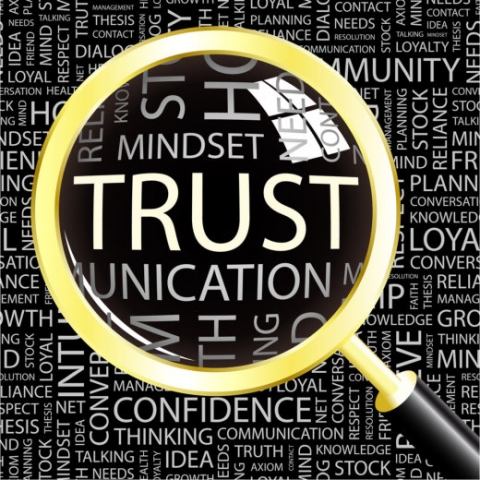
Trust is at the heart of the Business Design 2.0 framework. Trust, not blind trust, is essential in every relationship. In business, in particular, we need to establish processes and systems that trust but verify. Trust comes from the alignment of the words and deeds of every person individually and the organization as a whole.
Organizations with high levels of trust can operate more effectively, efficiently, and with lower operating costs. The framework focuses on 3 ways to build trust:
1. Transparency - Transparent organizations are better able to self-police and do not need excessive bureaucracy and controls to protect assets and ensure productivity. Instead it relies on the “neighborhood watch” approach and peer pressure, which are naturally occurring human behaviors.
2. Fairness - Fair processes garner trust and commitment particularly when the outcome wasn’t the one that was initially supported. Fair processes garner wide spread participation, encourage engagement, include effective explanations that are understood by all parties affected, and make it completely clear what is expected of them and the reasons why.
3. Stakeholder Interest Alignment – Stakeholders are anyone who is impacted by the organization and can include employees, suppliers, alliance partners, financing providers, educational institutions, and the community at large. The general idea is to start with the organizations’ purpose and then develop a value generation process that incorporates how all the organizations’ stakeholders’ interests align. This approach builds, trust, strong relationships, and resilience.
Customer Centric
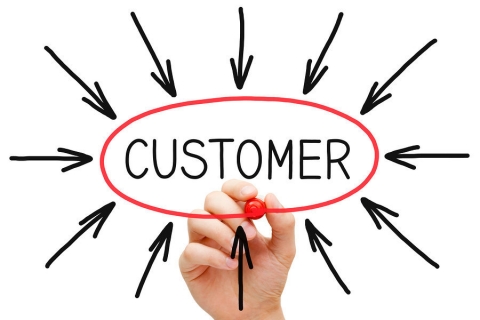
We can never lose sight that our sole purpose is to serve our customers. Happy customers should always be at the center of our universe. Whether they’re current, past or prospective customers, we should always have them at the forefront of our minds and build our organizations around making their lives easier and creating value for them. Building close customer relationships can lead to joint efforts to provide new or better products or services and grant us a little leeway when we make mistakes.
We need to go beyond thinking about customers as statistics and keep their humanity at the forefront of our minds, even when our customers are other businesses. It’s essential to put ourselves in their shoes by whatever method is necessary to understand their needs. When all else fails, talk to them face-to-face…
Direction Motivates

Without a stated purpose to the contrary, the assumption will always be that the sole driving motivation is to make the owners (shareholders) rich, at the expense of everyone else, period. It’s the default mindset. As a result, the organization must declare its purpose (beyond profits) if it intends to engage its stakeholders.
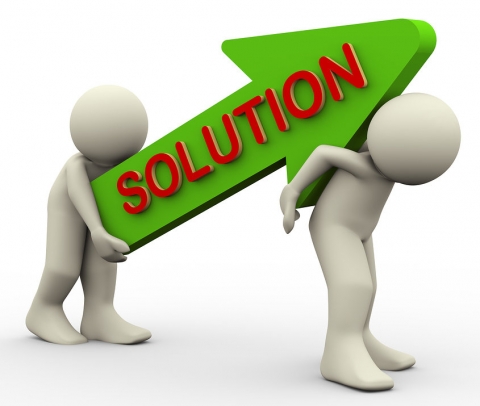
Purpose drives passion, passion drives people. Don’t confuse a purpose that serves the greater good with performing miracles like finding the cure for cancer. While curing cancer is a very worthy cause, it’s not the only one. There are every day ways that every organization can make our world a better place. For example, after I got my car inspected the other day, it occurred to me how important their role is to my safety, the safety of those with whom I share the road, and our environment. I bet they don’t give it a second thought.
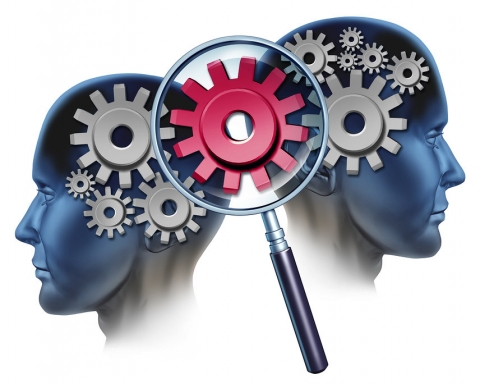
We take so many things in our lives for granted, until something goes terribly wrong... But what if that small automotive service business shifted their mindset to a stated purpose to protect its customers and our environment? How would it change how they operate over time? Think about the various automotive fluids, parts, and processes they influence, not to mention how they view each vehicle that they service. How could they make the lives of their customers safer and their operations more environmentally friendly? I’m guessing there are a number of ways. The idea is to embrace a purpose that makes our world a better place and see how that drives all the organization’s decisions and motivates its people to open their minds to greater possibilities...
Direction to effectively motivate people includes:

1. Purpose – reason for existence, particularly one that makes our world a better place or serves the greater good in some way.
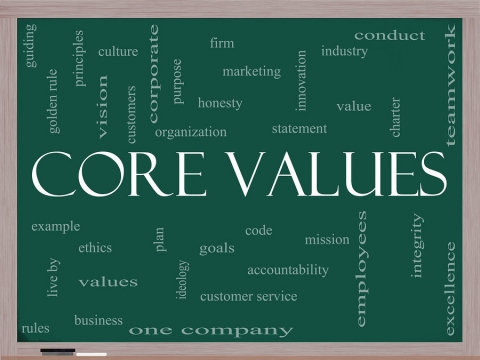
2. Core Values – one way to ensure that you have a cohesive team is to have a core set of clearly defined shared values that drive the choices that are made along the way to realizing our driving purpose.
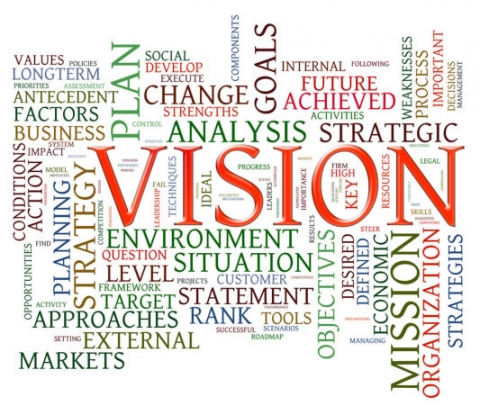
3. Vision – interim steps used to progress forward towards achieving our ultimate purpose
4. Mission – assumes a time frame of 5 to 10 years and is the main focus of our efforts to realize our vision that moves us closer to achieving our purpose.

5. Strategy – The big picture plan to achieve the mission.
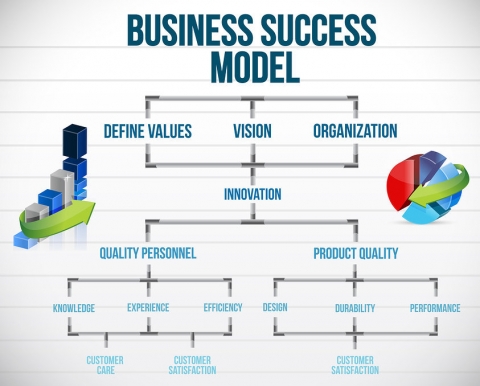
6. Business Model – the practical application of our strategy that incorporates our entire organization.
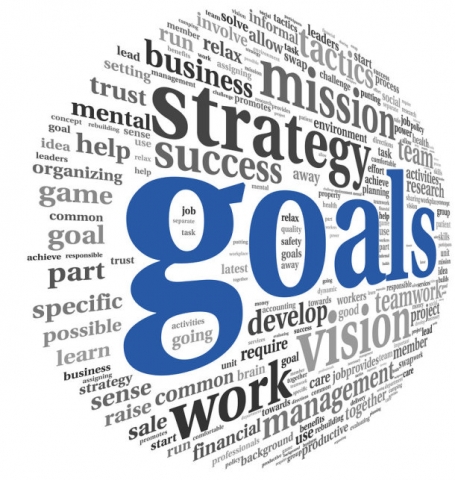
7. Goals – The tactical activities that are necessary to achieve the mission. Each unit of the organization will identify the goals it will achieve to ensure that the organizations overarching goals are realized.
Organizational Structure
The traditional organizational chart is known for creating internally competitive silos where resources are horded and fiefdoms are protected at all costs. It adds layers of bureaucracy and cost but most importantly, the customer is nowhere to be found… Does this look familiar?
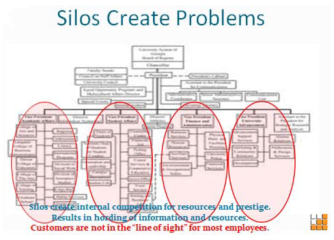
Instead, what about a framework that is more flexible, transparent, and effective? Create a framework that includes both the Organizational Structure and is overlaid, in a logical manner, by the Business Model. Design a structure that everyone can understand and, more importantly, that actively interfaces with the customers on a daily bases through a clearly designed feedback loop. It might look something like this:
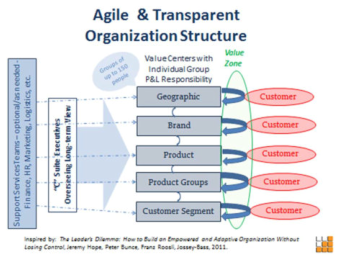
Key aspects include:
1. The value centers would be grouped in a way that made sense based on the organization's business model.
2. The value center teams would ideally be groups of up to 150 people for effectiveness.
3. The value centers would be cross functional teams designed by the members and would not be limited to operations personnel.
4. The value centers would have full autonomy in managing their P&L, including:
a. Who serves as Team Leaders (leaders must have people willing to follow them)
b. Subject Matter Experts can be made available to the team or full-time members of the team, as deemed appropriate
c. Hiring (includes all phases)
d. Salaries/Wages (includes fairness internally, as well as, in the field/industry)
e. Rewards/Recognition (includes intrinsic and extrinsic)
f. Promotions (holistic view of skills to be successful in the new position, not limited to technical skills)
g. Terminations (with compassion)

5. Transparency makes information available to everyone and supports knowledge sharing across the organization.
6. Every team interfaces with customers daily.
7. The Value Zone is the benefit the organization would reap in immediate customer feedback in product and service improvements, innovation, product/service bundling, etc.
8. Value Centers would be free to place small bets through experiments with willing customers on new product and service ideas.
9. The C-Suite executives would be responsible for keeping the organization on track with the long-term vision, obtaining and allocating resources using venture capitalist like parameters (knowing when to hold them, when to fold them, and when to reconfigure them), and keeping watchful oversight.
10. The administrative functions would provide support as needed at a mutually agreed upon cost. Value centers would be free to outsource support, if necessary, to maintain their profitability. An overhead burden would not automatically be added to their P&L, because the value centers would have full control over their units’ profitability. Administrative functions could include:
a. Accounting/Finance
b. HR
c. Marketing
d. IT
e. Logistics, etc.
The key points are that it is flexible, holds everyone accountable for results, and demands trust and transparency to really work.
Management Methods
Companies are actually delicate eco systems rather than machines. The management model needs to be designed in a way that transitions away from human spec sheets, annual recalibration, learning experiences that operate more like system maintenance/upgrades and cold calculating decommission and dismantling at any sign of trouble. Humanized management processes/methods could include:
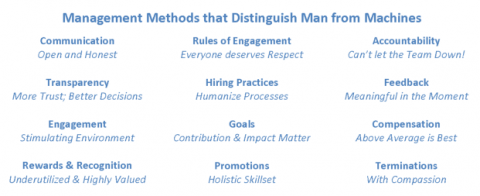

1. Open and Honest Communication – It sounds simple but we all know it’s really tough because we learn as children the down side of being open and honest. To make matters worse, most of us (me included) never received any training on effective communication and there is a lot to learn. Learning the “hard way” means that most people learn to be quiet rather than speak up.
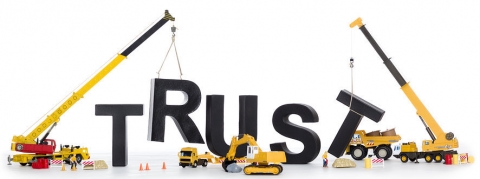
One of the most important aspects of open and honest communication is not just the improvement in relationships and building trust, those are huge all by themselves. It is that open and honest communication can also mitigate the problems associated with cognitive bias, where we fool ourselves into thinking we’re right when we’re actually wrong. Progressive companies incorporate various types of effective communication training into their organizations. It’s part of the growth process.

2. Rules of Engagement – It needs to be clearly stated, if the organization really does permit anyone in the organization to speak up, and the circumstances where it is considered appropriate. It should also be clear that all communication should be respectful regardless of anything else that may be going on at the time. Everyone has to be willing to live by these rules. There should be a zero tolerance policy for bad behavior, regardless of title, otherwise the effort is wasted and no progress will be made. In fact, things will get worse, much worse.
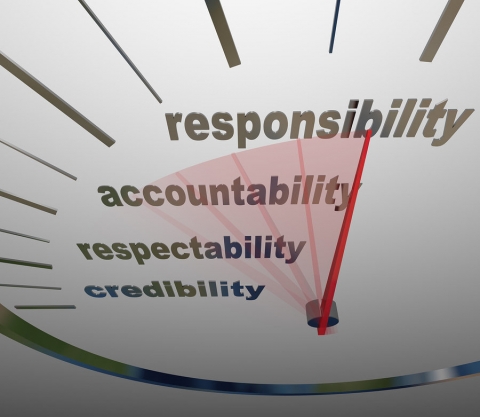
3. Accountability – holding people accountable is essential and is easier to achieve in trusting environments with open and honest communication where everyone is operating under the same rules of engagement. In cohesive teams, no one wants to let the team down. They step-up and pitch in with all their energy and enthusiasm. Everyone wants to make a difference!
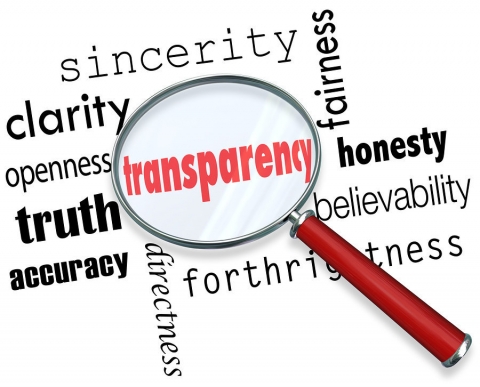
4. Transparency – Open access to information adds a little peer pressure to decision making. The neighborhood watch approach, in general, makes people think twice before behaving in questionable ways. Additionally, access to information helps people make better decisions because more information gives them a clearer picture.

5. Hiring Practices
a. Job Descriptions should tie the position to the organization’s purpose and focus on the highest priorities and the desired outputs/results. Yes, having established procedures is important so that no one is re-creating the wheel, but everyone should be encouraged to identify process and system improvements. It should be abundantly clear that “staying busy” shouldn’t be their primary objective.
b. Interviewing using off-the-shelf templates that everyone knows how to “answer correctly” isn’t an effective approach to the selection process. Giving candidates a way to demonstrate their abilities through portfolios of their work (could be blog posts on pertinent topics, etc.) or some type of an audition may be a better indicator of their capabilities. Including the rest of the team in the selection process improves the odds of finding the “right fit.” Determining the candidate’s values, strengths, career objectives, and sense of purpose are an essential part of the process.
c. Onboarding is often a neglected process or thrown together as an afterthought leaving the new hire with high aspirations, with a bad first impression. Acclimating a new hire to their new “home" should be a group project where everyone on the team plays a role ensuring the new hire becomes a productive contributing team member on their first day.
For example, each new hire could have 2 mentors from day one. The first might be someone that was hired within the last year and can easily relate to the new hire experience and support their transition. The second mentor might be a person within their team that can aid in their understanding of the team goals, processes, and how the new person’s role fits in to their success.
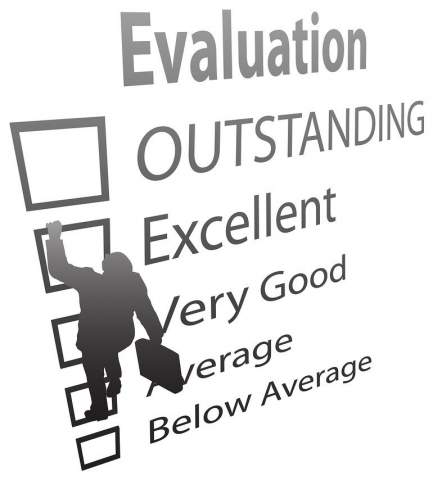
6. Feedback - The real issue is not if we should have performance reviews, it’s how the feedback process needs to transition from an annual mechanical checklist mentality to one that meets the human need for continuous feedback. People really want, need, and deserve immediate and continuous feedback on the good and “ways they can grow in their role.” We all need to learn how to give and receive feedback. It’s essential that we remember that when we receive feedback, it’s just one person’s opinion. The key is in how the information is conveyed, including tone and intent.
a. Feedback tips include:
1. Clear – the intent of the feedback should be clear, not vague.
2. Short - stick to one point either what was good or what I can do to improve.
3. Specific – put it in context and give me the details so I know what behavior to repeat or modify and why. Help me see why a particular behavior is appropriate, relevant and how my performance ties into our purpose, values, and the rest of the team. When I understand why my performance matters in the big picture, as a team player (social being), I will usually step-up my game because I don’t want to let anyone down.
4. Timely – tell me about it today, in the moment if possible.
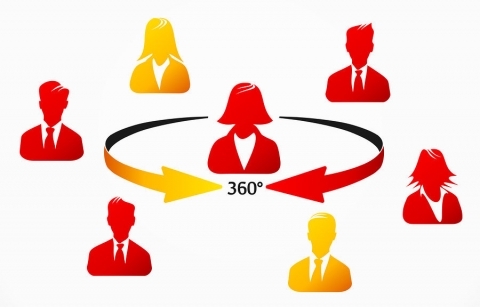
In an open and trusting environment, everyone should be encouraged to seek feedback from anyone in the organization to get a clearer picture of their performance. With training and practice it can be a welcome growing experience for everyone involved (giver and receiver).
When the method of data collection and dissemination is a burden, it doesn’t get done. Every organization needs to use the tools and techniques that make sense in their situation. While I’m a big believer in using technology, there is nothing wrong with old school pen and note card. The investment in personal development is well worth the improvement in engagement and performance.

7. Engagement - Engagement is a result of many factors, including the performance of meaningful work, growth opportunities, autonomy in our work processes, and having trusting bonds with our team members. An environment that embraces the Business Design 2.0 elements will go a long way in stimulating engagement and the desired performance.

8. Goals are essential in business but having everyone with a single focus on one aspect of the business without keeping the big picture in mind can be counter-productive. Build goals that take into consideration the ebb and flow of the business as a whole. Having the guys on the shop floor produce tons of a product that’s not selling doesn’t help, it hurts the organization. Make sure everything fits together in a meaningful way.

9. Compensation can be a sensitive subject but it doesn’t have to be. Everyone wants to be paid fairly for their geographical region and their contribution to the organization. The key is fairness. When there is disparity, that’s when employees disengage, find ways to “make-up” for the perceived disparity, or seek other options. At a minimum be fair. If possible, pay above average to retain above average employees so money is no longer a concern so they focus on the business. It costs much less in the long run.
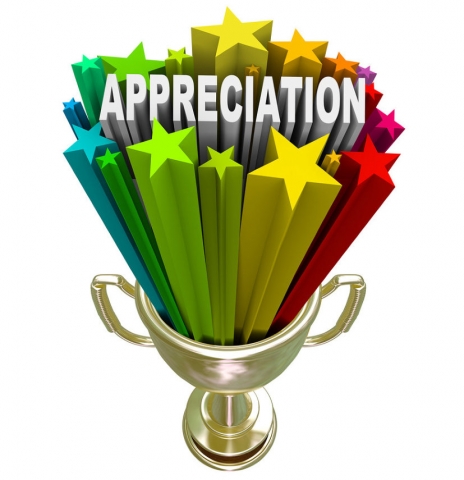
10. Rewards and Recognition is often an under-utilized avenue for employee engagement. There are countless low and no cost ways to show employees how they are contributing and their efforts are valued. Often the most appreciated are the most creative and/or spontaneous. The kind that legends spawn from. Keep in mind that once you start paying hard dollars for something, people are usually not willing to go back to intrinsic rewards.
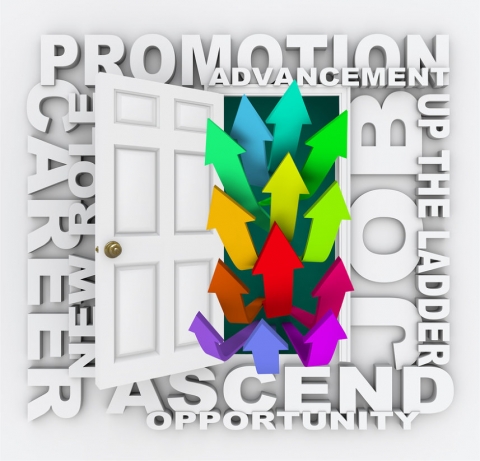
11. Promotions have often led to subject matter experts, with no people skills, being put “in charge” of others, resulting in frustration and lower team performance. Promotions should include an assessment of all the skills and abilities that a person needs to be successful in a new position and not limited to technical skills, particularly if the new position requires them to support and motivate others. Thought should also be given to having two separate positions. One who supports employees and another who is the “subject matter expert.” Additionally, the agile & transparent organizational structure doesn't require as many managers as a traditional organizational structure needs to operate.
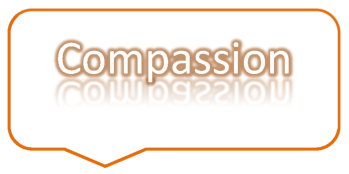
12. Terminations are difficult for everyone. For one thing, it means having to admit an error in judgment when hiring. Sometimes it’s a matter of whether the person is in the right position or not, or the dynamics of the team, or a mismatch in values. Helping a person who is struggling find a way to meaningfully contribute can be very rewarding. It’s a two-way street though; the person has to put forth consistent meaningful effort as well. Despite best efforts, sometimes there is no other viable option than to let them find success elsewhere. If that’s the case, be honest and direct, while using compassion, and help them transition the best way that you can.
Lifelong Learning
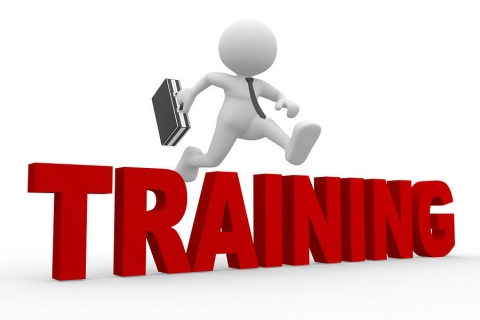
Our world is changing faster than our educational institutions can adapt. In order for businesses to ensure that their workforce has the skills that it needs, it should establish an employee development pipeline for every position it needs to fill, currently, or in the foreseeable future. Historically, this approach has been limited to leadership development but realistically it needs to be expanded to the organization as a whole.
Too often businesses take the position that they are too small or lack the financial resources to have a formal training and development department. In reality, as soon as a business hires its first employee, training becomes an important aspect of their operation.

A formal education is just a drop in the bucket of the “know how” that is used on the job. Employees learn from one another naturally every day. We learn in short bursts. Why not take that natural learning process and incorporate it into the organizations normal operation.

Establishing recurring events that incorporate active learning techniques can give rotating cross functional employee teams an opportunity to work together, that they might not otherwise have, and shine a light on interests and skills that people didn’t know that they had.
By documenting through video or searchable wiki posts, the organization can assimilate its own knowledgebase to meet the growing information needs of its personnel and document experiments that worked and didn’t work and why. There are lots of tools to support the collection and sharing of this type of information. In fact, it’s probably already happening in your organization. The question is whether the information is effectively organized, quickly searchable and easily available to the people that need it, when they need it.
In addition to raising our technical skills, organization should also consider a “curriculum” of topics that aren’t typically covered in school. Things like:
· Effective explanations that even people outside our area of specialization can understand and appreciate.
· How to give and receive feedback so that we become more effective communicators and build relationships rather than antagonize one another.
· Dealing with the blame game.
· How to have difficult conversations.
· Cognitive biases and ways to mitigate them.
· How to make good decisions.
· Identifying your strengths, how to capitalize on them and how to avoid using them to excess.
· Benefits of using positive psychology in the workplace.
· Financial Analysis for non-financial personnel. Everyone needs to understand how their actions and the actions of others affect the organization.
· Understanding risk, how to watch for it, what to do when you see it, and risk mitigation techniques.
· Futurecasting as a way of taking the things that we know are highly likely to occur and how to develop strategic and tactical plans to capitalize on that information.
· Understanding and Developing Relationship Capital.
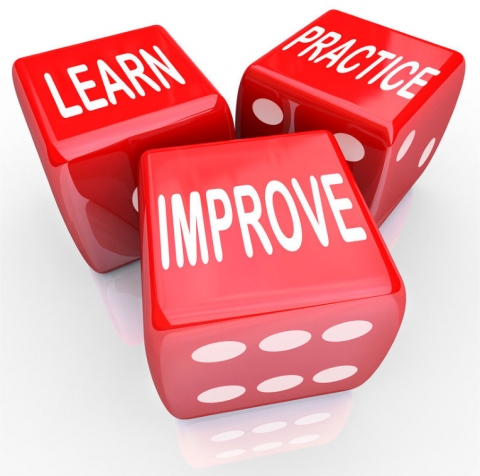
A key point is that training success should be judged based upon an individual’s mastery of the subject matter and include on-the-job reinforcement, not just be a “completed” checkbox on their personnel record. Training programs need to build in progressive activities to stretch and grow participants throughout the training process. A lifelong learning mindset needs to be built into the organization's culture.
One simple suggestion for incorporating learning into business routines is to take an industry article (any industry that has an implication to your organization), give a 2 minute summary of the article's highlights, and then take 5 minutes for group discussion on how to apply it to your organization. It doesn’t have to be a big ordeal; the point is to be continuously stimulating growth and development.
Adaptability Mindset
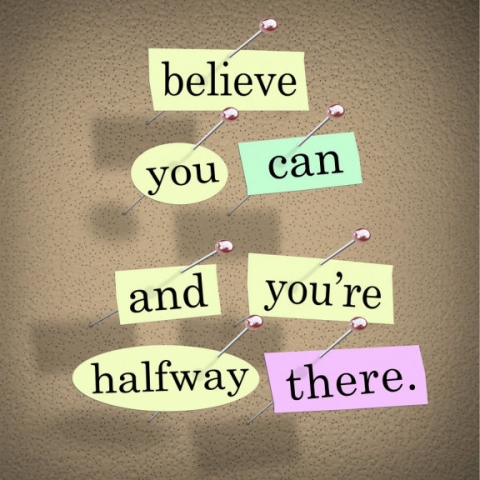
We haven’t even begun to tap the power of the mind and mindsets are the easiest place to start. It’s tricky stuff though because it means challenging our beliefs… We must not lose sight of the fact that our bodies follow where our mind takes us.
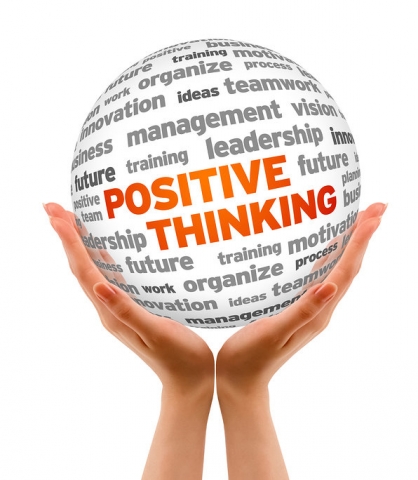
I’m referring to the way we think about things, for example: optimism versus pessimism, growth versus fixed mindset, being trusting versus distrustful, embracing change versus resisting it, considering the needs of all stakeholders versus self-serving, and thinking with a mindset of abundance versus scarcity to name a few. Our perceptions of reality direct the actions we take. By making a conscious choice to shift our thinking to a positive productive perspective, we can change our lives for the better.
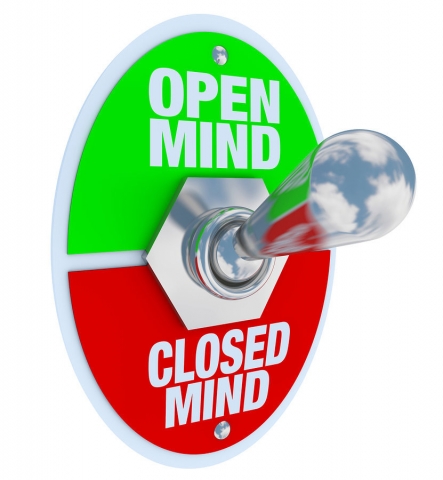
If an organization, as a whole, integrates trust, diversity, life-long learning, open mindedness and collaboration into its values and culture it will have incorporated much of the flexibility needed to adapt to our ever changing environment.
Creativity & Innovation

Creativity and innovation are the basic building blocks from which process and system improvements, new products, product lines, and services emerge. It’s the life blood for an organization that wishes to have a long and prosperous future. The problem is that machines can’t create or innovate only people can. Even still, it takes a relaxed, open, curious mind to be creative, which means you can’t demand it and get the best results. Instead, it must be nurtured.

Nurtured means creating an environment that learns from failure not punishes it. That empowers people to share and explore ideas through small experiments. Building a knowledgebase of ideas and experiments can become a treasure-trove of opportunities over time. Ideas that were initially deemed infeasible can become very attractive, particularly when external opportunities are figured in to the equation, which is another opportunity for building relationship capital with all stakeholders.
Performance Empowerment
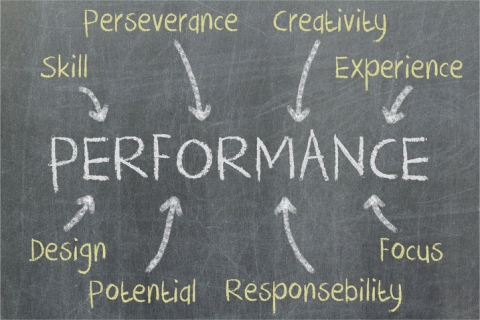
There is a lot of fun and glamour in creativity and innovation but the reality is that every business, regardless of size, must evolve or die... Finding ways to improve every aspect of organizational performance at every level is essential. A mindset of human, process and system performance needs to be the norm.
One key to effective buy-in is to have a policy that no one will be laid off because of improvements made by an employee. Instead, employees impacted will be cross-trained to work in other areas, support new growth efforts, or be given an opportunity to share other ideas on how they can contribute value to the organization. Benefits of performance empowerment include:
· A deep commitment to the organization’s purpose.
· A more autonomous workforce.
· An open and collaborative culture.
· A desire to build capabilities.
· An ongoing approach to dialogue and feedback.
Human Performance
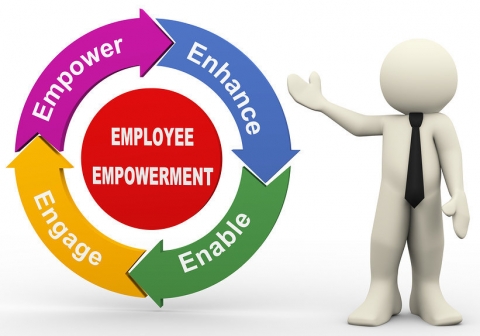
Every person should be responsible for finding ways to improve the quality and quantity of their results/output. Helping everyone see how their efforts fit into the ebb and flow of the overall work effort, knowing how and when to adjust their flow in the support of others, and having the authority to take care of business in the moment are all essential aspects achieving optimum levels of performance.
Key points include:
· To be effective, it is essential to provide employees who are being held accountable for specific results to be given the authority and resources necessary to achieve those results.
· Use strengths based matching between individual employee capabilities and the position requirements to achieve the highest individual performance and job satisfaction.
· Challenge and empower employees to operate at peak performance rather than just maintaining the status quo.
· Invite employees to participate and exercises like “Kill the Stupid Rule” to support a lean mindset and commitment to continuous improvement. [Source: Kill The Company]
· Employ a self-regulating system whereby authority, responsibility, and decision making are transferred to front line units (value centers) with responsibility for their own profit and loss results. When problems arise in the unit, employees can identify and correct them immediately, in the moment, not having to wait for someone with “authority” to step in and take care of it for them.
Process Improvement
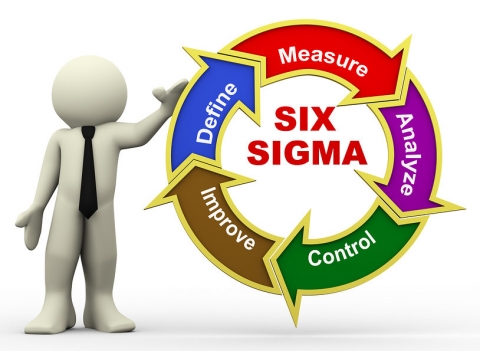
Due to the continuous advancements in technology, it is essential to periodically evaluate business processes to determine if better performance can be achieved. Additionally, other avenues for process improvement include:
· Decision Process and Quality – decision quality is an area where having a defined process can dramatically improve results. Too often businesses become over confident in their decision making ability, even when they have made bad decisions, because they have had good results (i.e. the decision to drive under the influence of alcohol repeatedly just because you haven’t had an accident yet…). The magnitude of those combined decisions may not be evident until a particular consequence triggers a series of catastrophic events (causing an accident with fatalities, going to court, going to jail, losing your job, house, family, etc.).
Another benefit of having a clearly defined decision making process, is that it helps to mitigate cognitive bias, particularly when your organization has honest and open communication.
· Risk Identification, Communication, Assessment, Responses/Actions, and Ongoing Monitoring are often relegated to a few people who can’t know everything…everyone need to receive training on identifying, assessing, communicating, and responding to risk. Everyone needs to participate in managing business risk, the more “lookouts” the better.
· Business processes can be evaluated in segments within a single work group, where they transition from one group to the next (internally or externally), or from beginning to end as a continuous progression. Every aspect should be periodically evaluated. An improvement in one area should spark similar re-evaluation of other areas since new tools or perspectives are always becoming available.
System Optimization
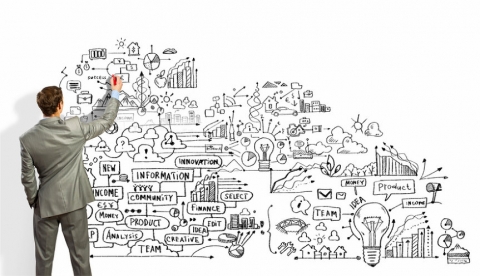
Means taking a “big picture” perspective on a perch high above the forest and looking down to evaluate the overall effectiveness of the system in question. How high depends on the situation and how many organizations may be involved. Ideas for consideration include:
· Technology that provides tools and process that cultivate an informed, engaged, and connected organization.
· Operating reviews of existing products and services for technology and environment improvements or identifying their projected sunset timeline and taking action to ensure a replacement revenue stream.
· New product and service innovation functions and capabilities. In this world of constant advancements, there are no sacred cows. Constantly interacting with customers (current, past and prospective) ensures your organization stays relevant in meeting their needs. Partnering with stakeholders can also open avenues for new products and service development, particularly when an attractive comprehensive customer solution can be developed beyond the capabilities of a single organization.
· Organizational wide, active and ongoing, risk management oversight. Many businesses lack an organizational wide system for monitoring and mitigating risk. Risk tolerance is different for every person. Without a system in place, the organization is not consistent in monitoring and managing risk. Some personnel will inevitably overcompensate while others will tolerate excessive exposure. A system is needed to ensure comprehensive and consistent application of the organization’s agreed upon risk levels.
· Futurecasting capabilities and functions. Without a defined system for forward thinking in every aspect of the organization, it’s easy to be blindsided by global advancements.
· Ongoing business model and management design evolution. It’s easy to get comfortable in “the way we do things” and forget that new business and management models can provide benefits.
Hidden Asset Tip: It’s not uncommon for organizations to have unique capabilities as a result of their processes and/or systems that can be sources of revenue generation. Even noncore business and orphan products can offer huge benefits. Even IBM transitioned from hardware sales to services from that type of observation in their own organization.
Immortality Planning
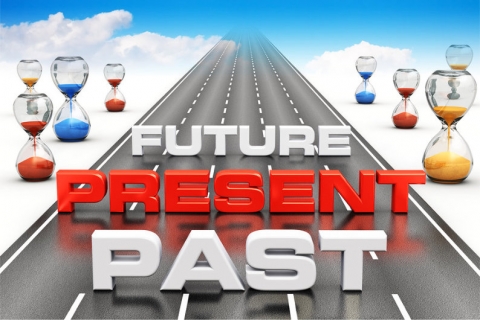
Planning the never ending story is a never ending job. C corporations in the US can technically live forever, but few do. The economic crises was a great reminder of the value of building strong healthy organizations that provide a lasting legacy of good quality jobs for generations to come. Avenues to immortality include:
Workforce Pipeline
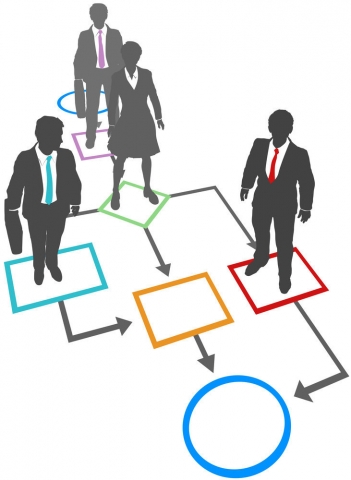
Historically, focus has been on leadership succession planning and there isn’t anything wrong with that. My concern is that the rate of change is occurring so fast that organizations that fail to have a workforce development pipeline in place for every position in the organization may find themselves without the capabilities that they need at any given point in time. More than ever, the benefits of promoting from within will come into play for organizations that recognize the need for preparedness.
Hidden Asset Tip – Never lose sight of the fact that your employees have more capabilities than you hired them for, some in areas that you never dreamed of. One print based advertising agency developed a highly profitable video and TV advertising line of services after one employee, with an active interest in theater, developed a video based solution for a prospective client. [Source: Army of Entrepreneurs]
The Right Risk

In an organization where the right circumstances (risks) have been defined in advance and opportunities are evaluated using a proven decision making process, an organization is far better equipped to place an individual or a series of “bets” that can dramatically alter the organization’s trajectory. The key is defining those circumstances in advance so that you can take definitive action, without hesitation, when opportunities arise. Being prepared is far better than flipping a coin or going with your gut and then losing the farm…
Forward Thinking
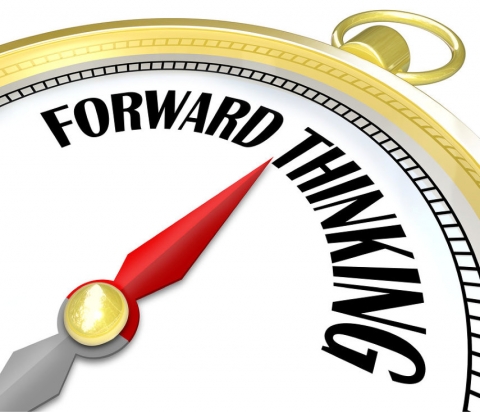
Simulations and forecasts are just a small part of planning for the future. Another avenue is futurecasting. The idea behind futurecasting is to envision and shape your organization’s future based on known (early stage) advances and reasonable foresight, no crystal ball required. It takes an open mind though.

Professional futurists offer lots of insight that companies can draw on for planning purposes. Regardless of your area of interest, there are people around the world analyzing the future impact of that topic. Don’t think you have to figure it out on your own. Use technology (Google Alerts or aggregator apps) and get everyone involved in tracking avenues that can benefit your organization.

A simple way to incorporate futurecasting into your organization, regardless of size, is to set aside time, as a part of regular meetings, to raise just one of many thought provoking questions such as:
· What is the most significant change on the horizon in our industry?
· Predictions say the next big thing will be ____; how will it affect us?
· The time when ___ is approaching. How can we take advantage of it?
· What advancement in technology will turn our business upside down?
· How will the obsolescence of ___ impact our business now or in the future?

For example, in a January 2014 McKinsey Quarterly article entitled “Next-shoring: A CEO’s guide” they talk about locating manufacturing operations in close proximity to demand and innovation. As technology continues to transform manufacturing operations, and wages and purchasing power rise in developing nations, they will lose their lower labor cost advantages making offshoring (as we know it) a thing of the past. We’ve already seen some manufacturing returning (referred to as “reshoring”) as wages rise in emerging markets. How would a change like that affect your company? Being on top of information like that can provide an opportunity to leap frog over your competition. Are you ready for something like that?
It doesn’t have to be a big deal, just raising awareness so that everyone has their antenna up watching out for opportunities and risks is enough to get started while staying within the boundaries of your resources. Just avoid getting blindsided out of existence. If it can happen to Kodak and Kmart, it can happen to anyone.
Build Relationship Capital
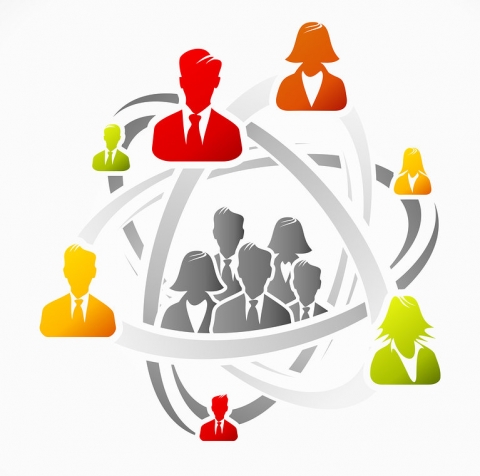
As social beings, our energy levels, creativity, and productivity naturally soar when we engage in authentic relationships. In organizations, we can capitalize on that strength by forming triads with stakeholders (includes employees, customers, financing providers, suppliers, vendors, alliance partners, educational institutions, the community at large, etc.). By building relationships with people and organizations outside of our team (regardless of how you define your team), we can trigger an exponential growth in our capabilities and reach, accomplishing more and greater things even faster than ever before.
It’s essential to long-term success to work toward mutually beneficial arrangements for all stakeholders, even if it initially makes things seem more complicated and takes more time to work through. With time and practice we will learn to transition our perspective and it will become easier and faster to accomplish greater things, making it worth the effort. Including all stakeholders in our planning, decision making, execution, and evaluation saves time and money over the long term.
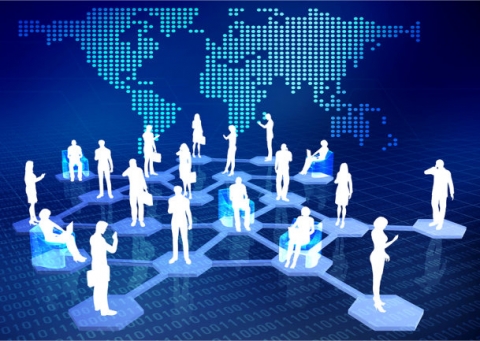
Dave Gray, in The Connected Company, explains the importance of the networks that are forming around companies every day. Many of these networks include our stakeholders. He says, “To adapt, companies must operate not as machines but as learning organisms, purposefully interacting with their environment and continuously improving, based on experiments and feedback.”
As an accounting professional, one of my favorite parts of The Connected Company is about “bad profits.” Bad profits produce revenue for the organization “at the expense of happy customers and long-term sustainable growth.” Examples given include nuisance fees charged by airlines, car rental companies, retail banking, and mobile telecom providers.
I think it’s interesting how these “bad profits” have opened the doors for new competitors to enter into some of these markets. Most people have heard the story about the Blockbuster late fee that antagonized Reed Hastings so much that he started Netflix and now Blockbuster is out of the brick and mortar DVD rental business, only their streaming services have survived.
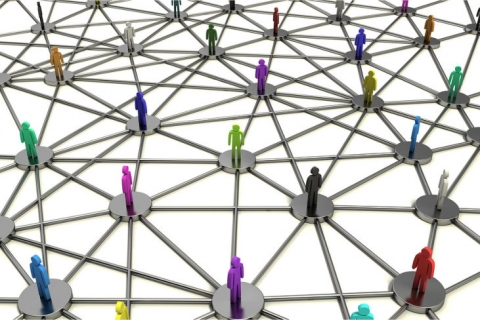
Dave Gray also talks about Network Power, which is the ability to detect changes in the environment (in real time) and respond in an effective manner (influence), as well as, the ability to influence the network as a whole (like standards setting). It’s easy to see how quickly networks can change, how complicated they will become as they continue to grow, and how visible we have become whether we want to or not. The internet and social media networks amplify corporate behavior, both good and bad.

I mention Network Power because we can already see the power struggles emerging. There are people that try to manipulate ratings with fake reviews bashing the competition and buying twitter followers and Facebook friends to pump-up their standing.
A small business owner that I know participated in a Chase Bank Small Business competition late in 2013 that awarded cash prizes to the winners. One of the requirements was to get 250 of your Facebook followers to “Like” your entry (Chase Bank would capture the Facebook information for marketing purposes). Within a day or two of submitting his entry, my small business owner friend received an email from a complete stranger offering to sell him 250 Facebook friend likes for $1 each. Instead, he printed the email message and took it to his banker at Chase and asked how they were going to know who bought votes and who played fair. The answer was a beleaguered “I don’t know.”
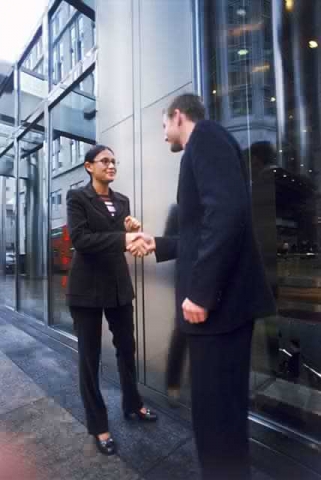
All this leads me to the importance of building relationship capital, person-to-person one stakeholder at a time (remember, every person matters). The internet and social media may make it easy to rack up connections of one type or another but in the end only the authentic ones count, don’t be fooled into thinking having a high head count is going to save your bacon if things go south... It seems very daunting for small businesses with limited time and resources. Maybe that depends on whether you grew up with the internet or not.
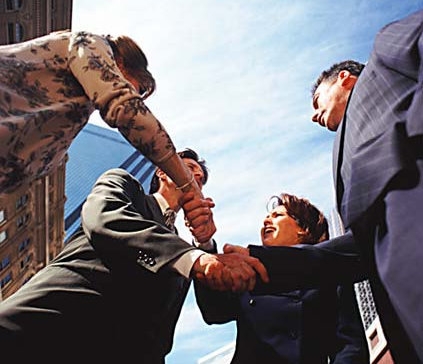
Working together to fulfill mutually beneficial interests that focus on value creation rather than bad profits seems like a worthwhile endeavor to me. If we happen to be ecstatic to get up and go to work every day building businesses that are wildly successful for generations to come, well that’s the kind of world I’d like to live in. How about you?
Start Now!

The things we need to get started are already available. There is no need to wait. It’s time to break free from “the way it’s always been done” and revisit the way we operate starting at the core. Have you designed your organization to support and nurture a delicate evolving eco system or a facility full of machines? A quick check on engagement and performance might be your first indicator.

In my mind, if you build better businesses, the kind that aspire to better things. It triggers a wide array of healthy behaviors that lead to happy productive people who develop value driven products and services through strong relationships with stakeholders, which in turn, extends corporate longevity, and, as a side benefit, stabilizes our economy. I’ve come to think of it as Phase II of the “Age of Enlightenment.” We’ve come so far but we can do better!
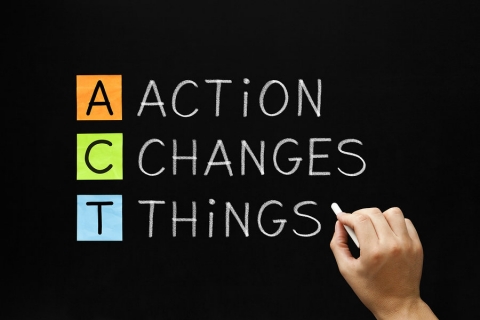
I’m ready to start a revolution, are you with me?
The Business Design 2.0 framework is more like a lifestyle change. It’s intended to work like a roadmap to allow everyone to start where they are and work towards building a Level 5 business (where a cohesive team builds a Game Changing Superstar of an organization), if that’s their goal. It requires a long-term perspective, patience, and persistence.
Employees should be supportive because the framework is designed to give them a voice in the organization, a greater understanding of how their role supports the company’s vision, an avenue to perform meaningful work, an opportunity to grow and develop within the organization, and an ethical organization to be proud to support.
Company leaders should be interested in embracing the Business Design 2.0 framework because it is designed to empower the organization to achieve sustainable long-term success. It serves as a quick reference for areas of the business and its workforce to nurture and develop over time. It’s like yoga; no one ever becomes a Master. Instead, it’s a lifetime practice. A daily reminder to practice or our achievements will begin to fade away…
Ideally, it will raise employee engagement, increase accountability at every level, improve organizational performance, strengthen stakeholder relationships, and lead to strong healthy organizations with dynamic capabilities that can evolve, adapt, and sustain over time.
Making changes before communication issues are addressed could cause problems. The view from the top of the organization may not reveal the communication issues. The view from the bottom of a traditional organization chart may be entirely different. Making sure the Rules of Engagement, that everyone has agreed to abide by, are in place as a starting point for open and honest communication might be a way to address this concern.
Expecting too much too soon could create problems. Depending upon level the organization is starting from, expectations need to be managed so that everyone understands the natural progression through the levels. A realistic assessment of the starting point, and the work that it will take to move every person through the team effectiveness levels, in order to bring the organization, as a whole, up through the team capabilities levels is essential.
Making too many changes at one time could create problems. Creating a reasonable transition plan that is easy to understand, clearly communicated and allows for an adjustment period is really important. When resistance occurs it needs to be addressed immediately and honestly.
Some people may be concerned that they will lose their job if the organization is restructured from a traditional organizational structure to one that is Agile and Transparent. The idea behind a restructuring should not be to gut the organization of “know-how” like a corporate lobotomy. Instead, it should be viewed as a way to improve the circulation of knowledge throughout the organization and make establishing an effective customer feedback loop a high priority.
All support services would clearly recognize the units as their direct customers and focus on the best way to support them and add value to their operations. The support service areas would shift their mindset to be more entrepreneurial in their view of the business. This mindset shift might need support to transition effectively.
If the framework is presented to the whole organization but is just given "lip service" without actual implementation, attitudes and behavior will be worse, not better. The leadership must be committed to the effort before it begins.
An organization could start with one forward thinking unit or group to apply the framework. Their feedback would be instrumental in effectively deploying it elsewhere in the organization.
Step one would be to get open and honest communication moving through the entire group affected, making certain to address all concerns.
Step two would be to get everyone affected by the change involved in the planning and implementation.
Next would be to do an assessment of:
1. Individual/team effectiveness
2. Team capabilities
3. Level of Trust
4. Customer Focus
5. Understanding of the Organization’s Purpose
6. Understanding of the Organization’s Values
7. Understanding of the Organization’s Vision/Mission
8. Understanding of the Organization’s Rules of Engagement
Then the group would develop an implementation plan with milestones in a timeline that met their needs. There is no right or wrong answer, just experimenting, learning, adjusting, and constantly moving forward.
S. Arlene Dilworth, CPA, CTP, CGMA
Links:
Man versus Machine comparison details.
Interesting Videos that support the Business Design 2.0 concepts.
Recommended Reading that supports the Business Design 2.0 concepts.
Resources:
Army of Entrepreneurs: Create an Engaged and Empowered Workforce for Exceptional Business Growth, by Jennifer Prosek, AMACOM, 2011.
“Explicating Dynamic Capabilities: The Nature and Microfoundations of (Sustainable) Enterprise Performance,” by David J. Teece, Strategic Management Journal, August 2007. Link here.
“Fair Process: Managing in the Knowledge Economy,” by W. Chan Kim and Renee Mauborgne, Harvard Business Review, January 2003. Link here.
Flash Foresight: Seven Radical Principles That Will Transform Your Business, by Daniel Burrus with John David Mann, Harper Business, 2011.
Kill the Company: End the Status Quo, Start an Innovation Revolution, by Lisa Bodell, Bibliomotion, Inc., 2012.
“Next-shoring: A CEO’s guide,” by Katy George, Sree Ramaswamy, and Lou Rassey, McKinsey Quarterly, January 2014. Link here.
Profiles in Performance: Business Intelligence Journeys and the Roadmap for Change, by Howard Dresner, John Wiley & Sons, Inc., 2010.
“Remaking the industrial economy,” by Hanh Nguyen, Martin Stuchtey, and Markus Zils, McKinsey Quarterly, February 2014. Link here.
“State of the Global Workplace: Employee Engagement Insights for Business Leaders Worldwide,” Gallup, 2013. Link here.
Strategic Management: A Stakeholder Approach, R. Edward Freeman, Cambridge University Press, 2010.
The Breakthrough Company: How Everyday Companies Become Extraordinary Performers, by Keith R. McFarland, Crown Publishing Group, 2008.
The Connected Company, by Dave Gray with Thomas Vander Wal, O’Reilly Media, Inc. 2012.
The Leader’s Dilemma: How to Build an Empowered and Adaptive Organization Without Losing Control, by Jeremy Hope, Peter Bunce, Franz Roosli, Jossey-Bass, 2011.
Tribal Leadership: Leveraging Natural Groups to Build a Thriving Organization, by Dave Logan, John King, and Halee Fischer-Wright, Harper Collins Publishers, 2008.
If the company will provide good environment for their employees they will have more fun going to the office and work with motivation. The company should hear and talk to the employees so that the company will have an idea on how to motivate and inspire every employee.
Regards,
Maryann, OBP
Business Profile:
Maryann Farrugia Management Profile
- Log in to post comments
Maryann, I absolutely agree with you. Thank you for sharing!
- Log in to post comments




You need to register in order to submit a comment.